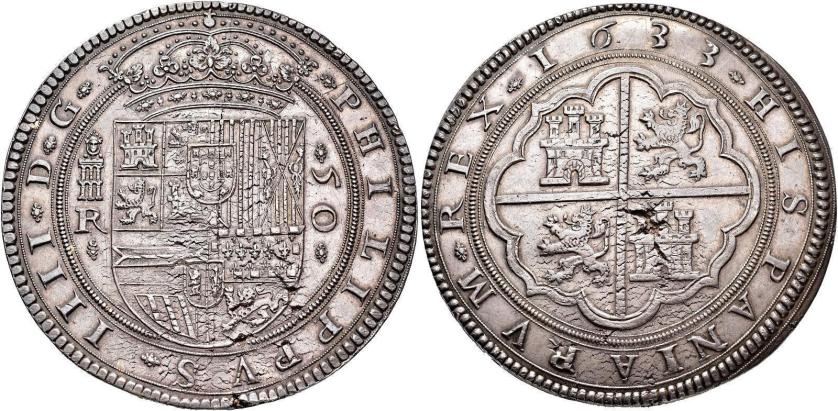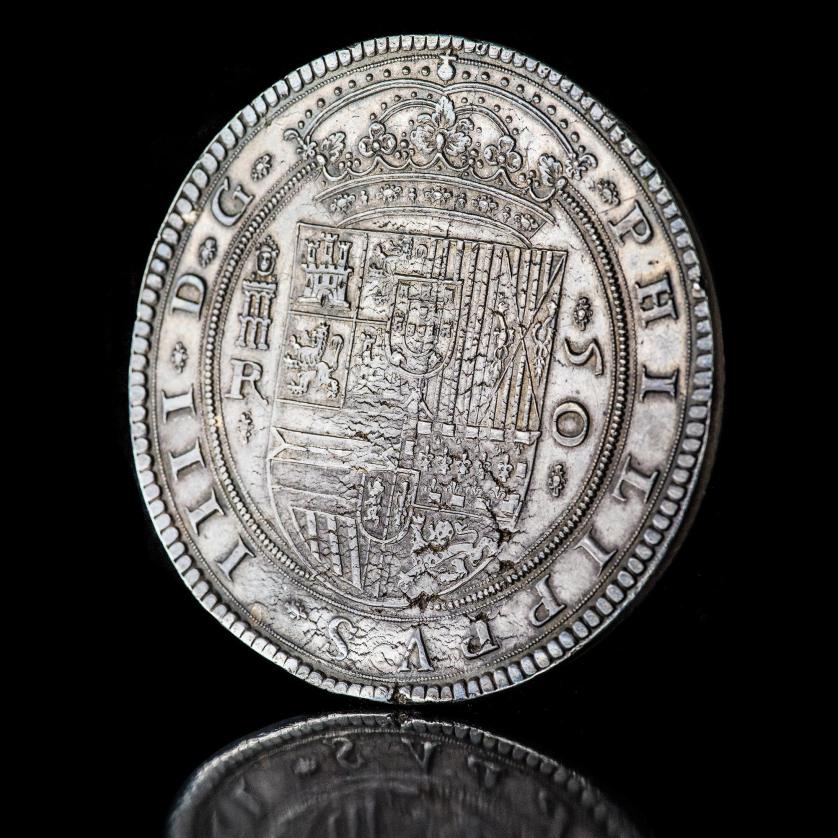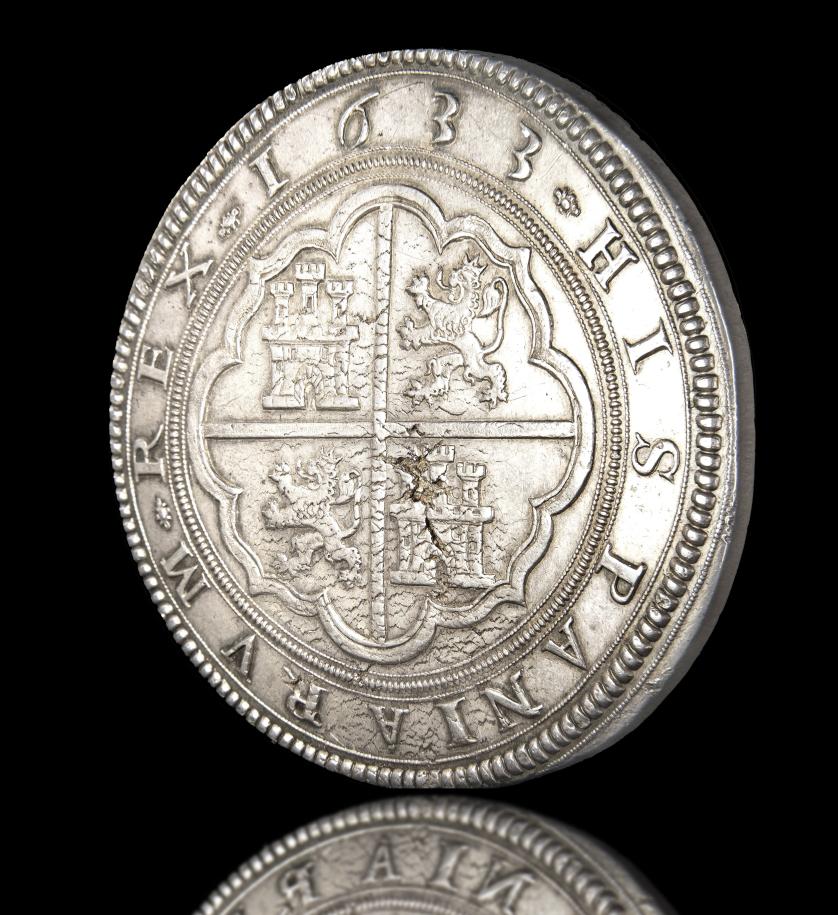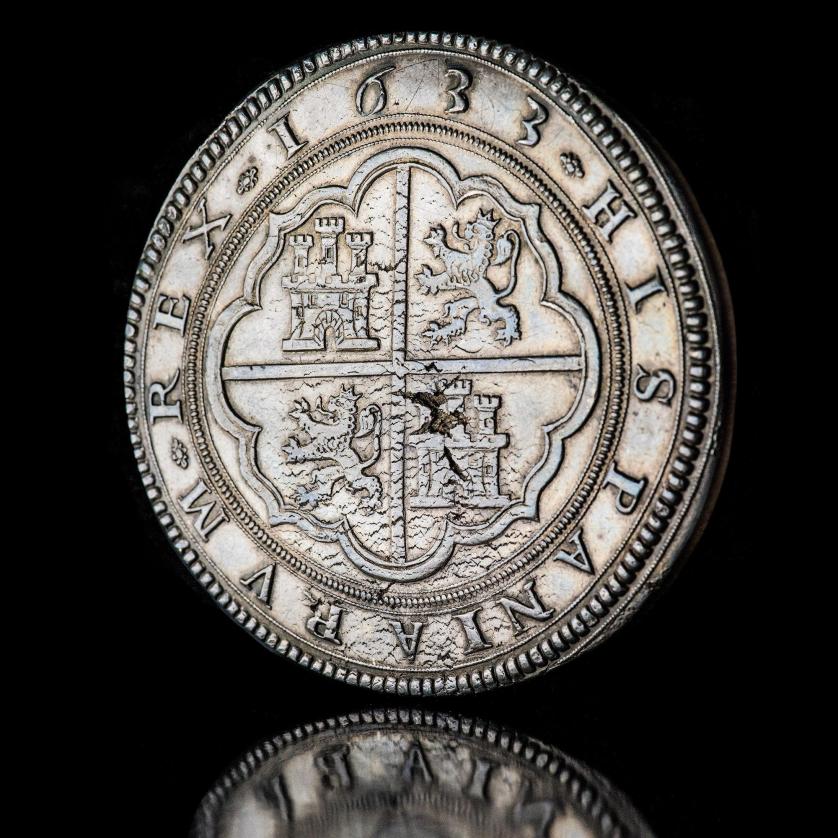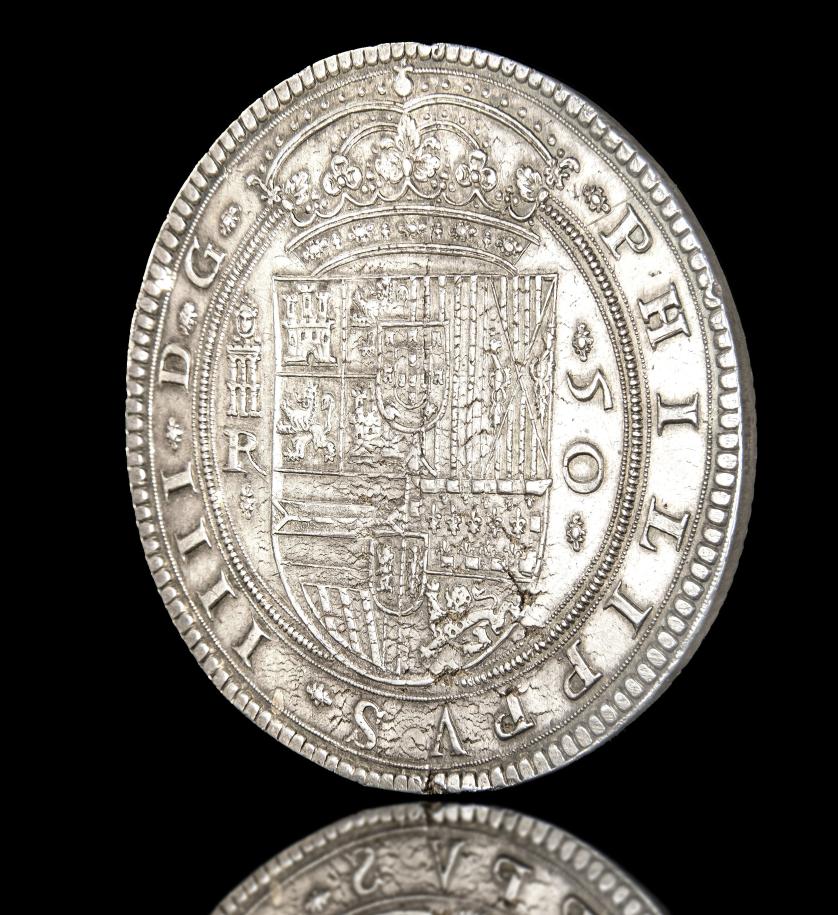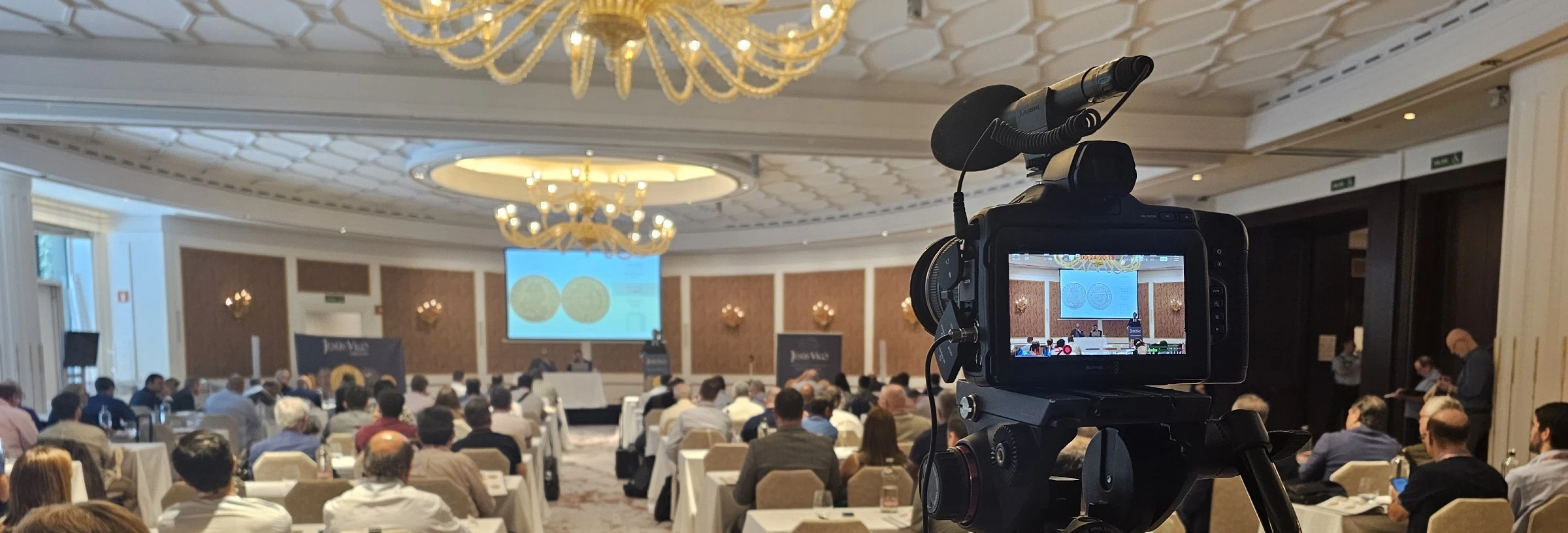Lot 261
Auction date
26-06-2024 15:00 CET
Finalized
Starting price 35.000 €
SOLD BY 48.000 €
PHILIP IV
PHILIP IV. 50 reales. 1633. Segovia. R. AR 168.61 g. 74 mm. AC-1701. Light “sour” silver on obverse, more pronounced on reverse. Beautiful grey patina. EF-. Very rare.
Categories
NumismáticaThe exceptional nature of these issues at the Real Ingenio in Segovia and the specific need of obtaining royal licenses to mint them is well known, with one of the main groups applying for these licenses being the Sevillian silver merchants. However, in 1633, there is an unusual case where an "open" license is issued in the name of the assayer of the Mint, Rafael Salván. This allowed him to work for any private individual without the need for the metal owners to request authorisation or declare the origin of their gold, as this license does not specifically mention silver minting. Despite this, silver mintings did take place, as we know that merchants Lope de Ulloque and Pedro de Arambaru (regulars in the issues at the Mint since 1621) minted 11,780 kilos of silver in Segovia that year, and part of it was made into pieces of 50 reales. The issuing of cincuentines of this year has another unique characteristic: there are three variants. The first has a small assayer’s mark and a mint mark of six arches (of which only 4 pieces are known), while the second and third have a large assayer’s mark and a mint mark of four arches (with a total of 9 pieces between both variants). These last two differ in that one of them has a hollow cross on the reverse and the other has a solid cross, which is the feature present in the piece being featured in this auction.
Recomended lots
Confirm your maximum bid
You are bidding for €
At the time of auction we will contact you by phone:
Confirm your maximum bid
You are bidding for
€
Loading…
Conecting with the server
Are you sure you want to buy the lot?
Confirm your maximum bid
You are bidding for
€

